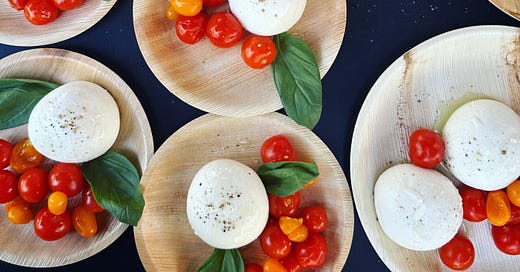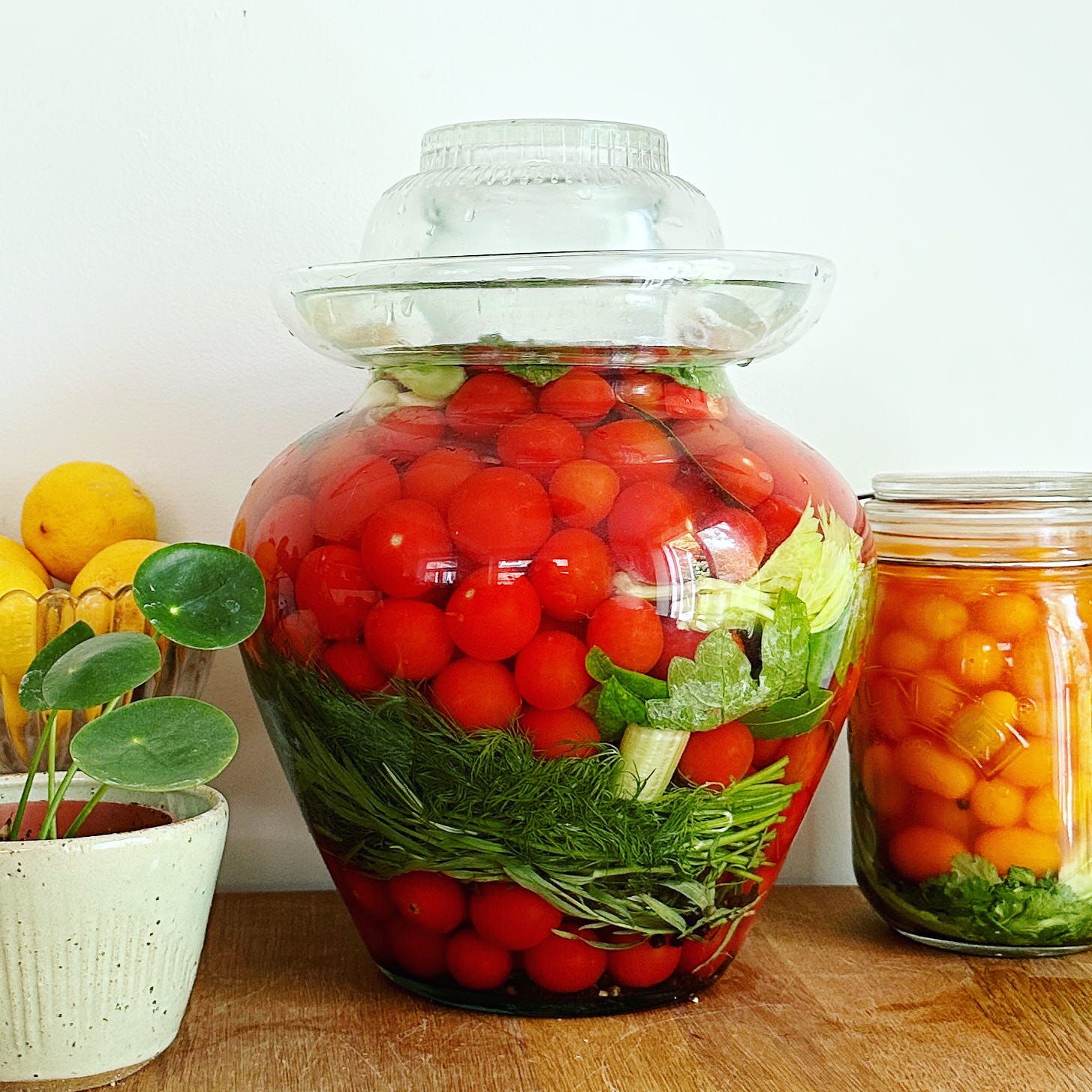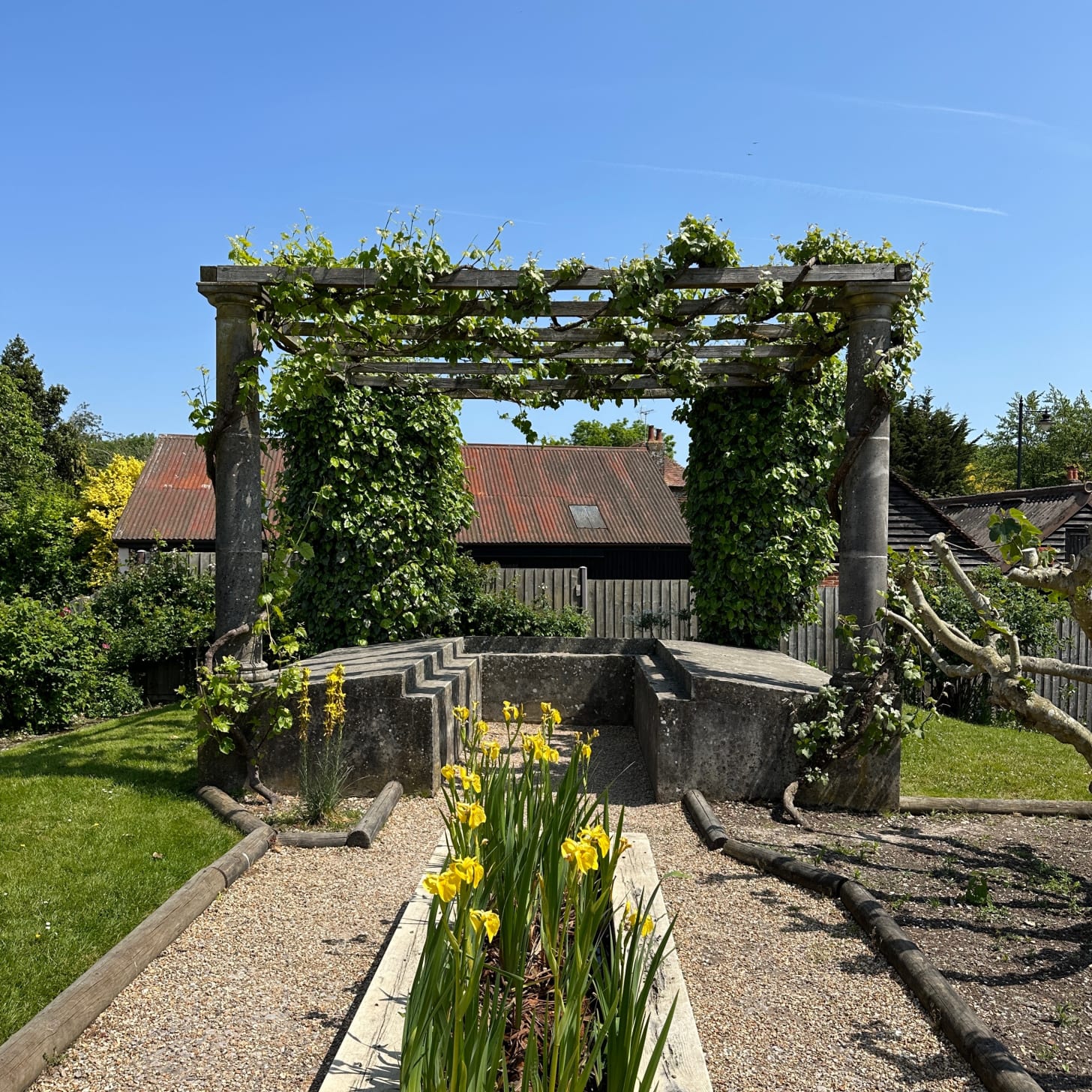In Good Taste #10: Lacto Tomatoes
Beautiful little flavour bombs; supper club update; fun in Fishbourne
Well, hello there! How are you?
Good I hope. Thank you so much for being here.
Apologies for the delay in this email. I have a summer cold which is playing out in quite a weird, fatigue-y way. It’s not Covid but is requiring a similar amount of sitting down time.
On the plus side, my inaugural Saturday supper club at Lizzy’s on the Green went beautifully. We were super lucky with the weather and people really enjoyed the food which was gratifying.
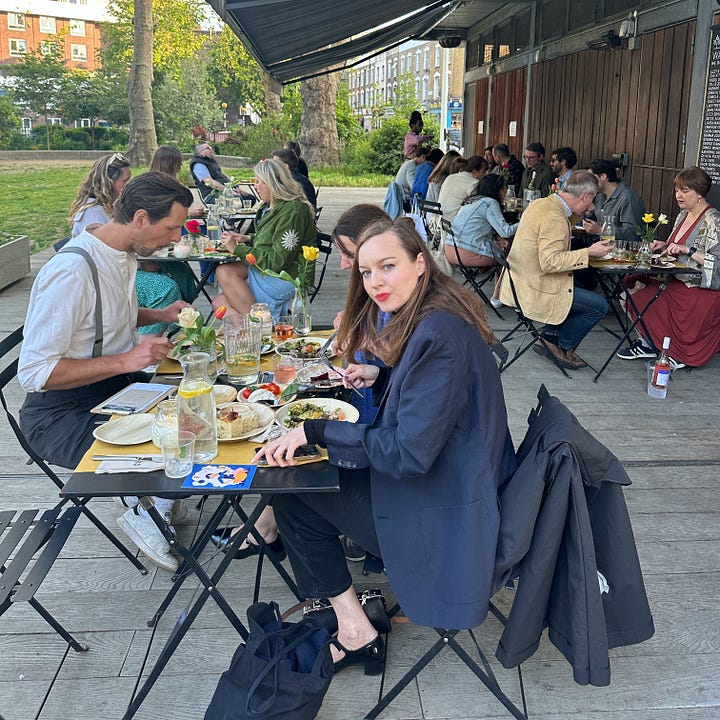
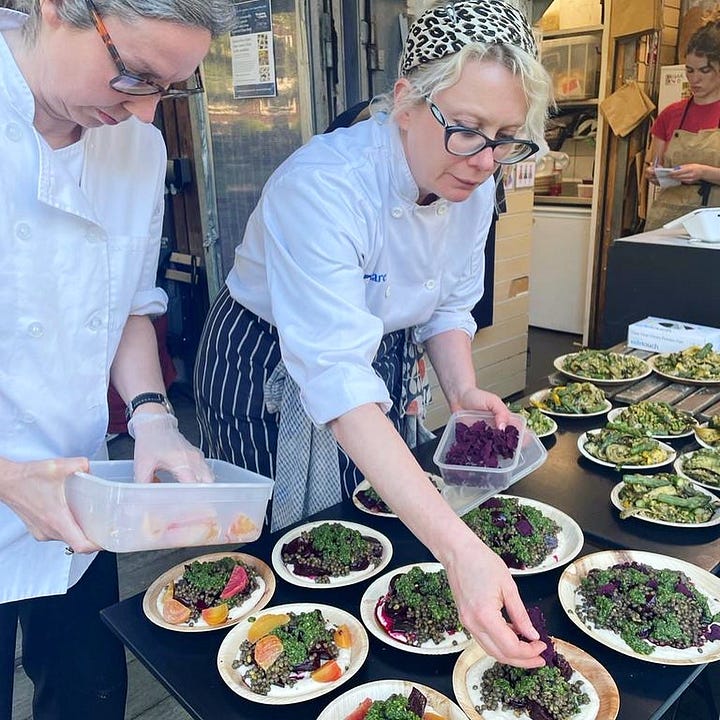
It was really nice to have so many people ask questions about the fermented flavours on show including the lacto tomatoes with the burrata (more of which later), the preserved lemons in the pasta filling and the blueberry coulis with dessert.
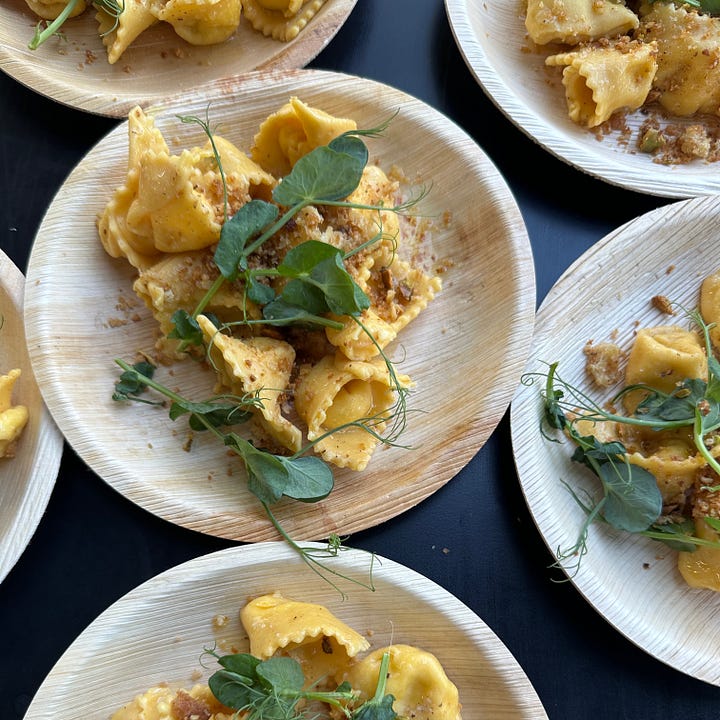
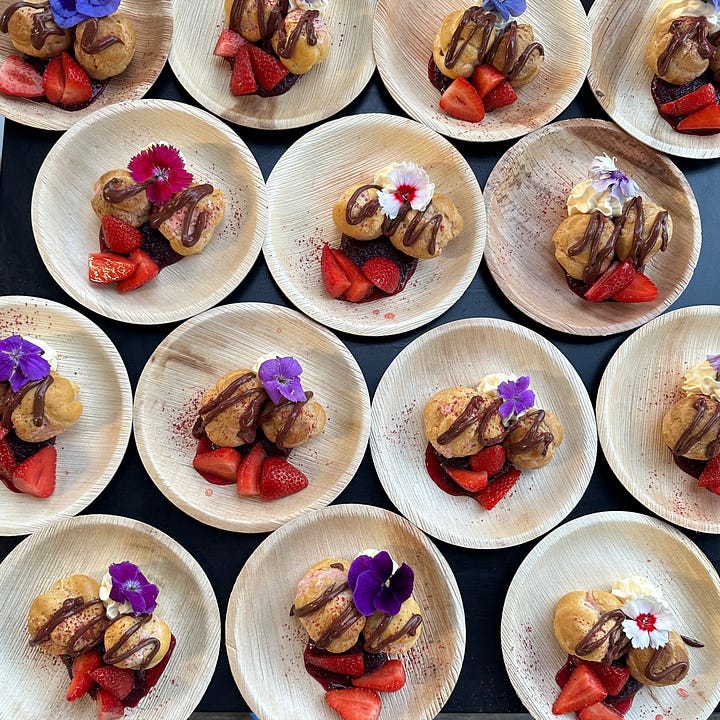
I’ll be cooking the same menu again on June 17th. It’s nearly sold out but there are a few tickets left if you hurry!
Then I’ll be moving onto something new for July. I’m just putting the final touches to the rundown of those dishes but naturally they’ll be super seasonal and feature more subtle fermented flavours.
I’ll be sharing the recipe for the elderflower “Champagne” cocktail that kicked off the evening soon so if you haven’t gone foraging for elderflowers yet then get to it! They’re absolutely everywhere right now (see the last mail out for the elderflower “Champagne”recipe itself and tips on gathering the right flowers amidst the profusion of other white blooms). There’ll be more fermented summer cocktail ideas to come too (including a delicious pineapple tepache-based rum number) so if you’re not already subscribed click the button below do you don’t miss out on those.
Right. Let’s get to the point before I have to lie down again and continue the brine pickle adventure that we began a few weeks back with cucumbers. Today we’re moving on to tomatoes.
Lacto-fermented tomatoes are so easy and so delicious. I originally read about them in Olia Hercules’s book, Mamushka and have been making my own ever since. The fermentation intensifies the tomtoes’ natural umami, making them a great addition to salads, pickle plates, tomato soups and sauces or even a Bloody Mary. I also love them for their element of surprise: they look just like a regular tomato but pop in your mouth with an intense burst of flavour and a hint of fizz.
Incidentally, Olia Hercules, who is from Ukraine and shares many of the country’s traditional recipes and fermentation techniques in her books, has been very active in raising funds for and awareness of the situation in Ukraine. You can donate here.
There are lots of delicious cherry tomatoes in the shops right now and anyone who grows their own will have plenty to play with soon so this is a useful recipe to have up your sleeve. I served both red and gold lacto tomatoes as an introductory course at my supper club alongside burrata, confit garlic oil and freshly baked focaccia and they were possibly the most talked about dish of the evening. If you can’t tell already, I really want you to make some of you own.
Recipe: Lacto Tomatoes
You’ll need a large, clean jar. A 750ml one works well for the quantities below but feel free to scale up or down. My giant Szechuan-style pickle jar in the picture below holds a couple of kilos-worth of tomatoes and the yellow ones are in a litre jar.
As with the cucumbers, I’m deviating from my usual 2.5% salt ratio because the tomatoes contain so much water. We’re going to go for a 4% brine (4g salt for every 100ml water) as the salt will pull water from the tomatoes, diluting the brine down to roughly the 2.5% ratio we want.
Ingredients
4% brine
1⁄2 tbsp allspice berries, brusied
1⁄2 tbsp black peppercorns
1 bay leaf/vine leaf
2 dill stalks
2/3 garlic cloves
1 celery stalk with leaves, chopped
500g tomatoes
Method
Make a 4% brine. If you like, boil the water in a pan and add the peppercorns and allspice for increased flavour. Let the brine cool completely (or it will kill all the lactic acid bacteria).
Put the bay leaves in the bottom of your jar and add the dill, garlic and celery.
Add the tomatoes to the jar.
Pour over the brine (including any spices). Add a pickle weight on top or use an extra vine leaf/couple more sticks of celery/sandwich bag filled with brine: anything that will keep the tomatoes submerged in the brine. Seal the jar.
The tomatoes will take about a week to become sour and fizzy. Leave them at room temperature, somewhere out of direct sunlight, “burping” the jar and tasting every day. When they have reached your desired degree of tartness move them to the fridge where they will keep happily for months.
Notes
There are so many uses for these. Use them in pasta sauce or soups, make a lacto pan con tomate or bruschetta. Try a fermented gazpacho or a new twist on brunchtime Bloody Marys. I’ll have recipes for some of these in future newsletters but would love to hear of anything else you try.
Ripe but not soft cherry tomatoes give the best results for tomatoes you can use in the ways I describe above. But you can slice up larger fruit if you want and end-of-season green tomatoes work well too, giving a firmer, sourer pickle that would be good alongside cheese.
Play around with herbs and spices. I love tarragon with the dill. Don’t leave the celery out - as with stock it adds lots of savoury flavour - and definitely use some leaves if you can. Allspice gives a nice complexity. Fennel seeds and chillies would be great too.
Vine leaves or bay leaves are important for the tannins which help the tomatoes keep their structure. Fermented tomato mush will still be delicious but doesn’t offer the same satisfying pop in the mouth.
As with the cucumbers, don’t throw away the brine. It’s full of flavour and particularly good in place of stock. Once I’ve eaten a jar of tomatoes my current favourite thing to do with the brine is use it to cook a batch of bulgar wheat then toss it through salads.
Cultural Fun
We had a really wonderful bank holiday weekend in Fishbourne. We have a book of Ordnance Survey walks you can do from London by train which included one from Fishbourne to Bosham. (The book’s subtitle is Outstanding Circular Walks which always makes me feel as if the OS is cross with us for not having hiked these routes yet). Bosham turned out ti be unfeasibly pretty. It has a harbour and a village green and a sweet little church. No shops that sell anything other than ice cream or souvenir crafts but otherwise a fantasy retirement spot.


We’d always planned to do this particular walk as a weekend trip so we could have time to look at Fishbourne’s Roman Palace and it’s mosaics (the largest collection in the UK).


I liked the mosaics (espacially this little bird hidden in the border of a particularly elaborate floor) but I was most struck by a recreation of a triclinium in the garden. Apparently this is where important guests would recline to eat and drink. My only thought was: wouldn’t that be terrible for their digestion?
We also spent a day in Chichester where I’d never been before and was very impressed by. Not least because the town centre is almost perfectly circular and quartered by four roads named after the cardinal directions so you always know where you are.


My favourite things were the Bishop’s Palace Gardens next to the Cathedral, the stained glass window by Marc Chagall in the Cathedral itself and the wonderful Pallant House Gallery. I almost always love city art galleries outside London. Partly because they’re less overwhelming in size but mainly because you get such a good mixture of stuff. Local greats, lesser known works by big names and curatorial idiosyncrasies.
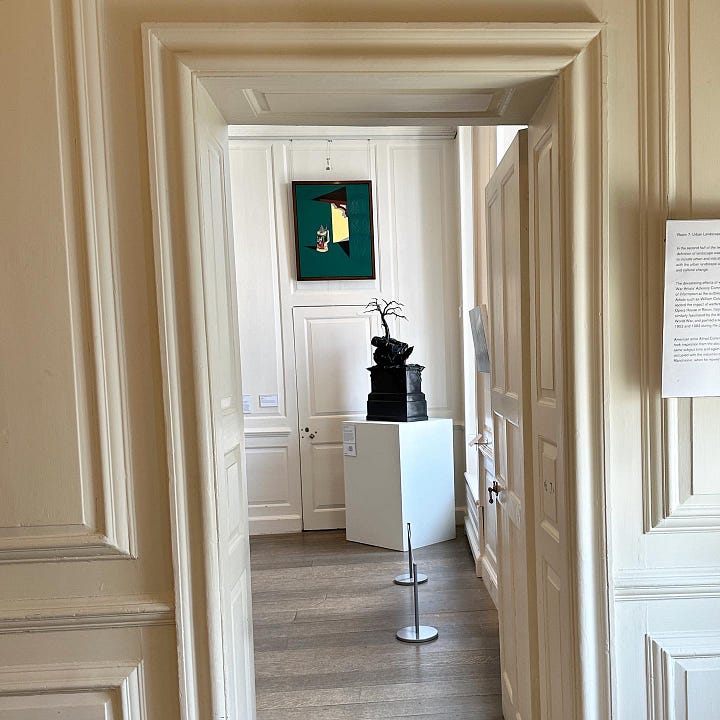
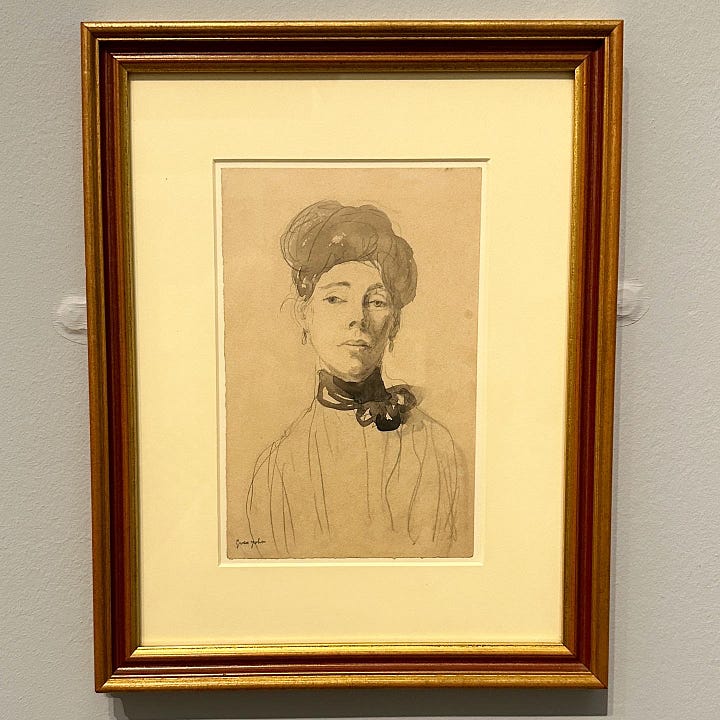
The Pallant had too many gems to mention but lots of Patrick Caulfield and Mary Feddon (I think I’ve said before how much I like painting of pears…) among others and a good temporary exhibition on Gwen John.
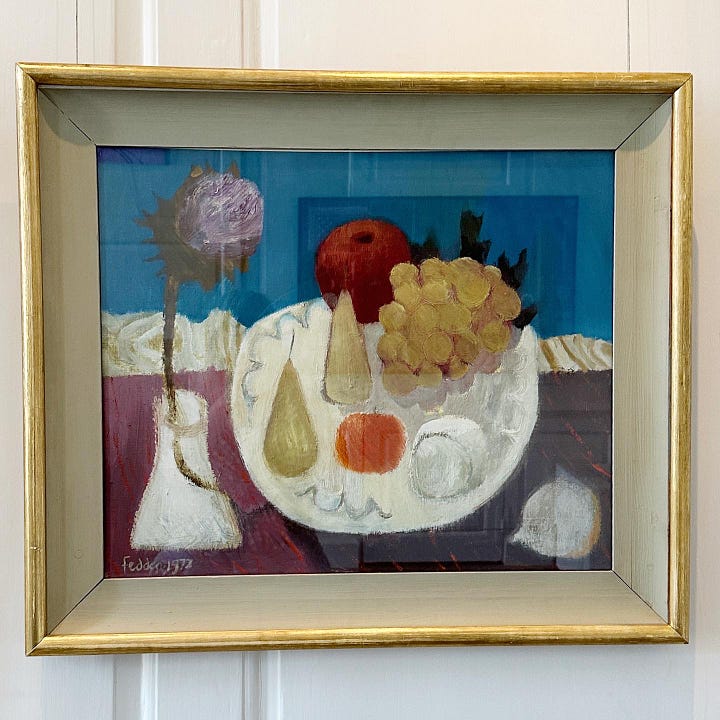
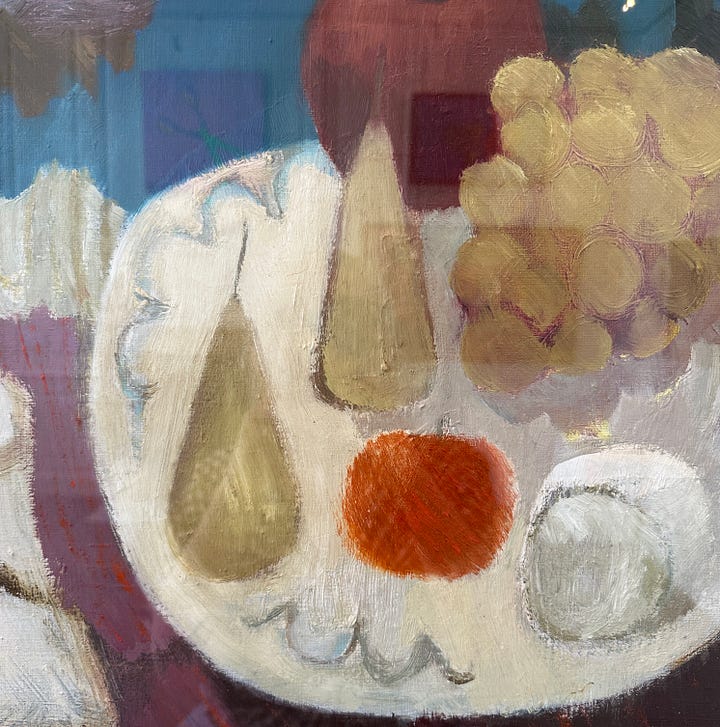
Even though that particular walk off is now ticked off our list and no longer “outstanding”, I’m sure we’ll return to the area.
Bye! See you next week!
In the meantime, if you felt like sharing In Good Taste with friends or family who might enjoy it, you can do so with the button below. It would mean the world to me. Thanks so much.
In Good Taste is a Sycamore Smyth newsletter by me, Clare Heal.
You can also find me on Instagram or visit my website to find information about my catering work, cookery lessons and upcoming events.


